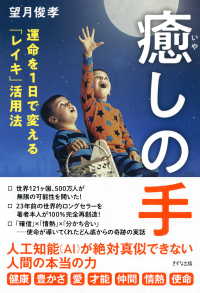Full Description
Key Studies in Sport and Exercise Psychology provides readers with a volume that examines in depth some of the most important and influential studies in sport and exercise psychology. Extensive examination of such studies has been historically difficult to achieve in general textbooks in the field. Also, students often wish to learn more about a particular article than textbooks offer or teachers provide in classroom settings. Invariably, interested readers are required to search for the original publication from other sources, which can be time-consuming. By bringing together a selection of important readings in sport and exercise psychology, this book fills a major gap in the academic literature. Each of the book's 23 chapters includes a framework makes the most efficient use of the material originally published. A Background and Context section is initially provided in order to put the study into a theoretical, practical, and historical context. This is followed be an abridged version of the Key Study, itself. A Subsequent Research and Application section concludes each chapter and focuses on research developed since the original study was published, as well as relevant theoretical, methodological, and applied issues. A list of additional readings is provided in each chapter, along with study questions to stimulate readers to think critically about any theoretical, methodological, statistical, and ethical features of the studies.
Contents
Part 1: Personality and Motivation
1. Personality
Morgan, W. P., & Pollock, M. (1977). Psychologic characterization of the elite distance runner. Annals of New York Academy of Science, 301, 382-403.
2. Anxiety
Martens, R., & Gill, D. L. (1976). State anxiety among successful and unsuccessful competitors who differ in competitive trait anxiety. Research Quarterly, 47, 698-708.
3. Aggression
Frank, M. G., Gilovich, T. (1988). The dark side of self- and social perception: Black uniforms and aggression in professional sports. Journal of Personality and Social Psychology, 54, 74-85.
4. Achievement Motivation
Duda, J. L., Fox, K. R., Biddle, S. J. H., & Armstrong, N. (1992). Children's achievement goals and beliefs about success in sport. British Journal of Educational Psychology, 62, 313-323.
5. Exercise Adherence
Dishman, R. K., Ickes, W., & Morgan, W. P. (1980). Self-motivation and adherence to habitual physical activity. Journal of Applied Social Psychology, 10, 115-132.
6. Self-Efficacy
Marcus, B. H., Selby, V. C., Niaura, R. S., & Rossi, J. S. (1992). Self-efficacy and the stages of exercise behavior change. Research Quarterly for Exercise and Sport, 63, 60-66.
Part 2: Social Processes
7. Social Facilitation
Triplett, N. (1898). The dynamogenic factors in pacemaking and competition. American Journal of Psychology, 9, 507-533.
8. Group Dynamics
Brawley, L., Carron, A., & Widmeyer, W. (1993). The influence of the group and its cohesiveness on perception of group-related variables. Journal of Sport & Exercise Psychology, 15, 245-266.
9. Leadership
Curtis, J. E., Smith, R. E., & Smoll, F. L. (1979). Scrutinizing the skipper: A study of leadership behaviors in the dugout. Journal of Applied Psychology, 64, 391-400.
Part 3: Psychological Characteristics and Skills
10. Characteristics and Skills of Elite Athletes
Mahoney, M. J., & Avener, M. (1977). Psychology of the elite athlete: An exploratory study. Cognitive Therapy and Research, 1, 135-141.
11. Coping with Stress
Gould, D., Eklund, R. C., & Jackson, S. A. (1993). Coping strategies used by more versus less successful U. S. Olympic wrestlers. Research Quarterly for Exercise and Sport, 64, 83 93.
12. Cognitive Strategies
Wrisberg, C. A., & Anshel, M. H. (1989). The effect of cognitive strategies on the free throw shooting performance of young athletes. The Sport Psychologist, 3, 95-104.
13. Attention and Concentration
Gill, D. L., & Strom, E. H. (1985). The effect of attentional focus on performance of an endurance task. International Journal of Sport Psychology, 16, 217-223.
14. Imagery
Hale, B. D. (1982). The effects of internal and external imagery on muscular and ocular concomitants. Journal of Sport Psychology, 4, 379-387.
15. Goal Setting
Hall, H. K., Weinberg, R. S., & Jackson, A. (1987). Effects of goal specificity, goal difficulty, and information feedback on endurance performance. Journal of Sport Psychology, 9, 43-54.
Part 4: Personal Growth and Psychological Well-Being
16. Character Development and Sportsmanship
Kleiber, D. A., & Roberts, G. C. (1981). The effects of sport experience in the development of social character: An exploratory study. Journal of Sport Psychology, 3, 114-122.
17. Exercise and Psychological Well-Being
North, T. C., McCullagh, P., & Tran, Z. V. (1990). Effect of exercise on depression. In K. B. Pandolf and J. O. Holloszy (Eds.), Exercise and Sport Science Reviews, 18, 379-415. Baltimore: William & Wilkins.
18. Eating Disorders
Brooks-Gunn, J., Burrow, C., & Warren, W. P. (1988). Attitudes toward eating and body weight in different groups of female adolescent athletes. International Journal of Eating Disorders, 7, 749-757.
19. Substance Abuse
Yesalis, C. E., Herrick, R. T., Buckley, W. E., Friedl, K. E., Brannon, D., & Wright, J. E. (1988). Self-reported use of anabolic-androgenic steroids by elite power-lifters. The Physician and Sports Medicine, 16, 91-94, 96-98.
20. Injury
Smith, R. E., Smoll, F. L., & Ptacek, J. T. (1990). Conjunctive moderator variables in vulnerability and resiliency research: Life stress, social support and coping skills and adolescent sport injuries. Journal of Personality and Social Psychology, 58, 360-369.
21. Burnout
Gould, D., Udry, E., Tuffey, S., & Loehr, J. (1996). Burnout in competitive junior tennis players: II. Qualitative analysis. The Sport Psychologist, 10, 341-366.
Part 5: Professional Practice and Ethics
22. Professional Practice of Applied Sport Psychology
Gould, D., Murphy, S., Tammen, V., & May, J. (1991). An evaluation of U.S. Olympic sport psychology consultant effectiveness. The Sport Psychologist, 5, 111-127.
23. Ethics
Petitpas, A., Brewer, B., Rivera, P., & Van Raalte, J. (1994). Ethical beliefs and behaviors in applied sport psychology: The AAASP ethics survey. Journal of Applied Sport Psychology, 6, 135-151.






